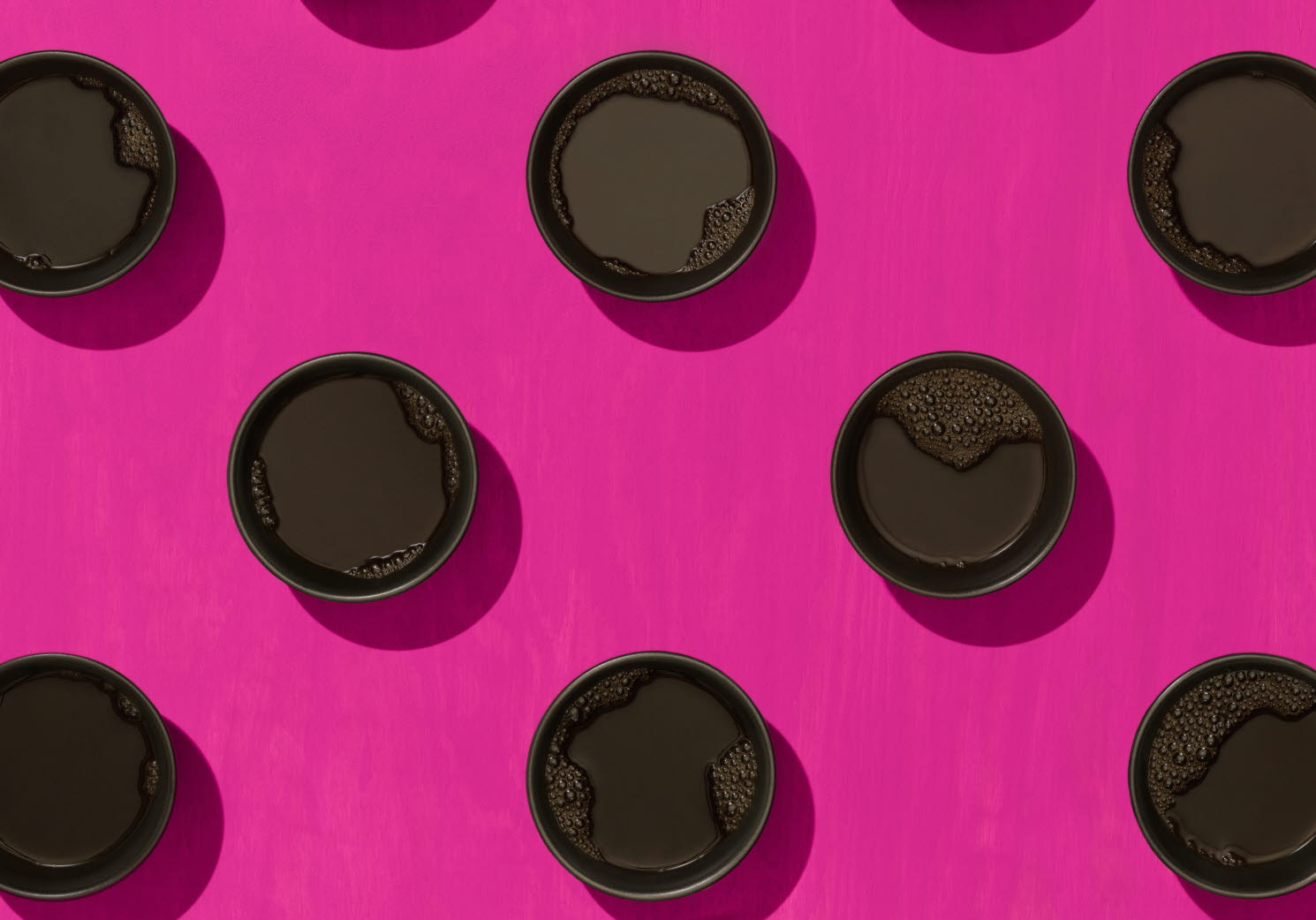We are moving into an era of colour. That’s the opinion of Karen Haller, one of the world’s leading experts on applied colour psychology. She specialises in brand colour, interiors and wellbeing, spent 20 years studying colour and has a deep knowledge of how it affects us and how businesses and designers can use it to influence behaviour.
Originally from Australia, she is now based in London where she heads colour campaigns for major brands such as Fiat, Dulux, Dove and Logitech.
Colour is your secret sales force
“I often tell brands, ‘Colour is your secret sales force’ because it’s already doing the selling. Colour is the first thing we register when we come across a brand. It has a deep psychological impact and will immediately start working on our emotions. There is no business that doesn’t have colour in it and yet very few professions realise how colour can be used to its full potential.”
This is probably because of historical reasons, Karen explains.
“Colour is cyclic. Up until the Second World War people used colour everywhere. Then along came the influence of Le Corbusier and the modernist architects. They regarded colour as frivolous or unnecessary and instead put emphasis on functionality. That’s still what architects are being taught. When I meet architects they say, ‘what’s wrong with white?’ Colour is being used more today but more often than not it’s slapped on as an afterthought. While design, form and function are very masculine, colour is emotion and is seen as feminine and often discarded. The movement towards black and white started in the 1980’s. We are now at long last moving into a colour cycle. It’s as if every generation wipes out what’s gone before. The next generation has to re-learn what went before and then adds something new.”
Colours don't really exist
Strictly speaking, colours don’t really exist. Or rather we create them in our minds in order to interpret the vibrations that are happening around us. The universe is pulsating with electromagnetic waves. The frequency range of electromagnetic waves is vast, from radio waves with up to 10 kilometres between them to tiny cosmic waves which move in wavelengths of around a billionth of a millimetre. Our eyes can detect only a small portion of this vast range, the portion with wavelengths between 0.00038 and 0.00075 millimetres. We know this section as visible light. When our eyes see the whole range together, we see it as white. When some of the wavelengths are missing, we perceive it as colour.
This was famously discovered in 1666, when Isaac Newton, then a student at Cambridge, used one prism to separate white light into “the colours of the rainbow” and then another prism to restore the white light. Not everyone was pleased. 150 years later, the Romantic poet John Keats complained that Newton had “destroyed all the poetry of the rainbow by reducing it to prismatic colours”.
“I often tell brands, ‘Colour is your secret sales force’ because it’s already doing the selling. Colour is the first thing we register when we come across a brand. It has a deep psychological impact and will immediately start working on our emotions.”
As far as those prismatic colours are concerned, mankind has evolved ingenious ways to capture them in paints and that story is full of poetry and wonder as well as commerce and greed.
The first colour paint
Ochre, derived from iron oxide, was probably the first colour paint and has been used on every continent since painting began. In prehistoric times, paints would be made with whatever pigments could be found locally. This changed however, as the early civilisations emerged. Societies became more stratified and with cities and trade came trade routes. One of the most important was The Silk Road, a series of routes established in 130 BC by the Chinese Han Dynasty, linking China with Europe.
“There’s no such thing as a wrong colour and there are colours that work better than others in certain situations.”
Silk was just one commodity that was highly prized in Europe. Even more desirable was Lapis Lazuli, a semi-precious stone, mined in a valley in northwest Afghanistan and used to produce ultramarine. A colour so highly regarded that Lapis Lazuli was even more expensive than gold.
Purple was another highly valued colour. It even gave name to the people who produced it, the Phoenicians, traders whose civilisation spread across the Mediterranean between 1500 and 300 BC. The source of purple was Murex snails. They were collected in their thousands, then boiled for days in enormous lead vats, producing a terrible odour. The secretion, a result of the fight and flight mechanism, would turn purple by using light and heat.
The dye was so expensive that only the imperial classes of Egypt, Persia and Rome could afford it. Purple would remain a royal colour. Queen Elizabeth I, whose reign lasted from 1558 to 1603, even introduced laws which strictly regulated what colours, fabrics and clothes could by worn by different classes, forbidding anyone but the royal family to wear purple.
Deep purple – the first synthetic dye
Some three hundred years after she inherited the throne, a teenager would make a chance discovery that would revolutionise the production of paints and dyes. His name was William Henry Perkin. In 1856, while still a student at The Royal College of Chemistry in London, he was working in his small home lab. He was trying to manufacture quinine, used as a treatment against malaria but expensive as it came from the bark of the South American Cinchona tree. Perkin experimented with a mixture of hydrogen, oxygen and aniline, an inexpensive and readily available coal tar waste product. Despite his efforts, he failed to produce quinine. Instead he produced a mysterious dark sludge. Not one to give up, he investigated the substance further, adding potassium dichromate and alcohol aniline during various stages of the experimental process. He finally ended up with a deep purple colour.
Perkin immediately realised the importance of his discovery and patented his process. He had produced the world’s first synthetic dye. At the age of 18 he left The Royal College of Chemistry to give birth to the modern chemistry industry. He opened his own factory. Mauve as he called his deep purple, became all the rage, with royalty and commoners alike. After that he introduced other synthetics dyes, aniline red, aniline black, alkalate magenta and Perkin’s Green. His dyes also had an important role in the development of science, not least in medical research where they were used to stain previously invisible microbes and bacteria.

Is it wise to change the colour of a brand logo?
Today, with a myriad of colour shades available, colour matching systems play a vital role in everything from printing to textile manufacture. Amongst the leading systems are Pantone and Toyo but matching colours is still not an exact science. Shades will often differ from screen to print and even with leading manufacturers there can be slight differences between paint batches.
Changing the colour of a brand logo can be fraught with difficulties. Is it even wise to do so?
“Only if the personality of the brand and its services aren’t in alignment with the logo and its colours. When we meet a brand, the first thing we meet is the branding and first of all the colour. We are already having an emotional response, to the colours, then the logo. Then we start reading the beautifully crafted words. That’s usually where the money is spent! With a brand we look for information to back up what we are already feeling. If they don’t align we tend not to trust the brand and will look elsewhere.”
Karen stresses that it’s important for brands to be aware of how colours are regarded in different cultures.
“Colour in culture and psychology are completely different. The psychology of colour is universal but it’s normally unconscious. Culture is conscious and therefore has a stronger impact. It can be thousands of years old, dictated by a village elder, royalty or the church, that a particular colour has a certain meaning. In modern times we have the adoption of gender specific colours, blue for boys and pink for girls. That emerged in the early 20th century, as a marketing strategy by a US department store. If you’re working in new cultures it’s wise to do your research. You may have to adapt your branding or product colours. In China, red is the colour for prosperity and good fortune while white signifies bad luck and is associated with death. So white wine, despite being yellow, doesn’t sell there if it’s called white wine. In Japan, black is considered sleek and glamorous. Black motorcycles were selling well but when one leading brand began exporting theirs to India they hardly sold any at all. This was because Indian mothers wouldn’t let their sons buy them as black is associated with death in the local culture.”
And there are many myths surrounding colours, for instance that yellow undermines confidence in a brand.
“No, that’s nonsense. There’s no such thing as a wrong colour and there are colours that work better than others in certain situations. Any combination of colours can work as long they are in harmony tonally.
How colours make you noticed
There are important things to keep in mind when it comes to using colours outdoors, whether it be advertising or street signs.
“You want to be noticed but do it in your brand colours or people won’t notice that it's you. A lot of people say use bright colours but you easily end up shouting. The most visible colour in daylight is a bright yellow. The colour that advances towards us the quickest is red. The colour on British post boxes was blue originally but people kept walking into them so it was changed to red. Street signs are red or yellow because they are the most effective.”
Colour trends change and nowhere quicker than in fashion.
“The trends are essentially marketing tools to keep the economy going. If we didn’t have trends we wouldn’t buy new clothes. Fashion brands study the reports put together by colour forecasting agencies and look two to three years ahead. The agencies source information from a range of sectors, interiors, fashion, cosmetics, the car industry and also look at what is happening in the world, socially, economically etc. Then they start to create a picture. So trend colours are a very good indicator about how we feel about the world and our situation.”

Karen Haller is a leading international authority in the field of applied colour psychology, specialising in business brand colour, interiors, healthcare and wellbeing. Having studied colour for over 20 years she understands how colour affects us, influences us and how businesses and designers can use it to influence behaviour.

